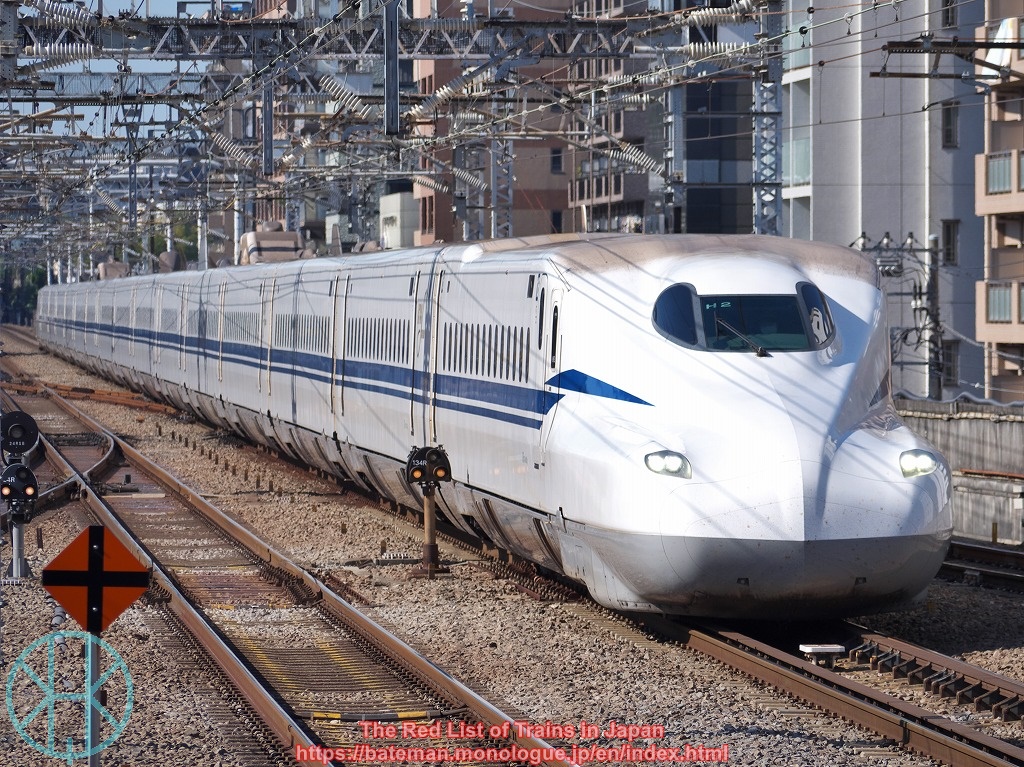N700S series Bullet Train

Data (as of 29 Nov 2025)
| Status: | Least Concern |
| Constructed in: | 2018- |
| Number built: | 974 |
| Registered: | 974 |
History
The N700S series was developed by JR Central to provide more enhanced services and replace some N700 series. Each N700S series unit is currently formed of either six or sixteen coaches, but it is designed to be compatible with various number of coaches. S stands for "supreme", and JR Central envisages to export high-speed trains similar to the series.
The N700S series is largely based on the predecessor (N700 series), but the front end was modified to minimise noise when entering a tunnel. Seating is quite different from the N700 series (especially first class). The most notable features are light & efficient inverters and traction, computer-controlled bogies that makes the train more comfortable, and batteries that allow running at low speed and using toilet in case of power outage caused by a major earthquake.
JR Central introduced the first unit in 2020, and soon followed by JR West. In 2021-22, JR Kyushu introduced five units that consist of six coaches to Nishi-Kyushu (West Kyushu) Shinkansen. As the line is isolated from other high-speed rail network and thus Doctor Yellow cannot enter, those on Nishi-Kyushu Shinkansen have track or signal monitoring features.
Current Operations & Future Prospects
JR Central and JR West use 16-carriage units on the entire Tokaido and Sanyo Shinkansen, not only Nozomi (fast service) but also Hikari and Kodama (semi-fast and stopping services). Their schedules are available on JR Central website and it is updated every early morning. JR Central has already ordered considerable number of units and due to enter service in due course. JR West also plans to introduce the N700S series to reallocate N700 series to Kodama services, replacing 500 series and 700 series.
JR Kyushu uses six-car units for Kamome (Takeo-onsen - Nagasaki). Unlike those for Tokaido and Sanyo Shinkansen, there is no first class coach.
